July has finally come to a close.
From the K-line perspective, Bitcoin has not exhibited the expected "bull run" this month; instead, it has been worn down by waves of consolidation.
Although we briefly touched a new high of 123,000 on July 14, looking back, this surge lasted less than a week. Throughout July, Bitcoin spent most of the time in a "playing dead" style of oscillation, especially during the beginning and end of the month—showing a rather dull trend.
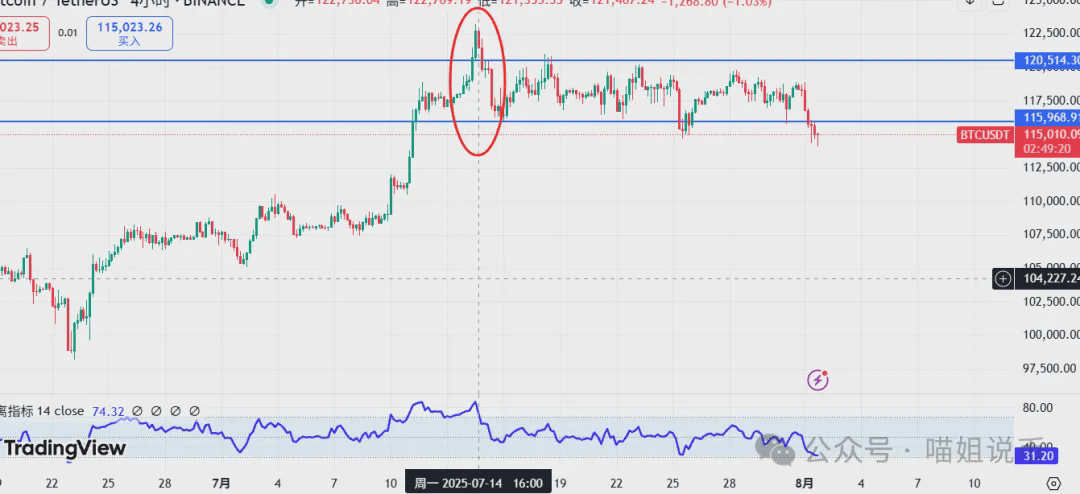
Monthly, Bitcoin has risen about 8%, while Ethereum has surged nearly 50%, marking the strongest single-month performance of the year—surpassing even May's 40% increase. In other words, throughout the second and third quarters so far, Bitcoin has not outperformed Ethereum, which has thrived in May and July.
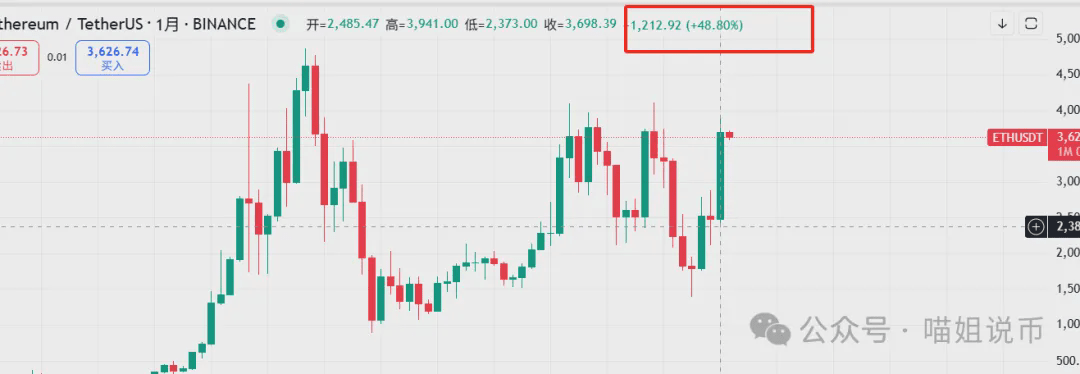
Seasonal + macro disturbances: Are August and September not sweet periods?
Historically, August and September have not been strong months for BTC, with trading volumes noticeably lower than other periods. Coupled with the strength of the dollar, risk assets often face pressure. Currently, DXY has already reached the significant 100 point mark, and if it continues to rise, it will inevitably bring greater volatility to the crypto market.
However, from the global M2 trend, Bitcoin often experiences a rise in August-September, while the real period for adjustment is from the end of September to mid-October, which basically synchronizes with the strengthening of the dollar.
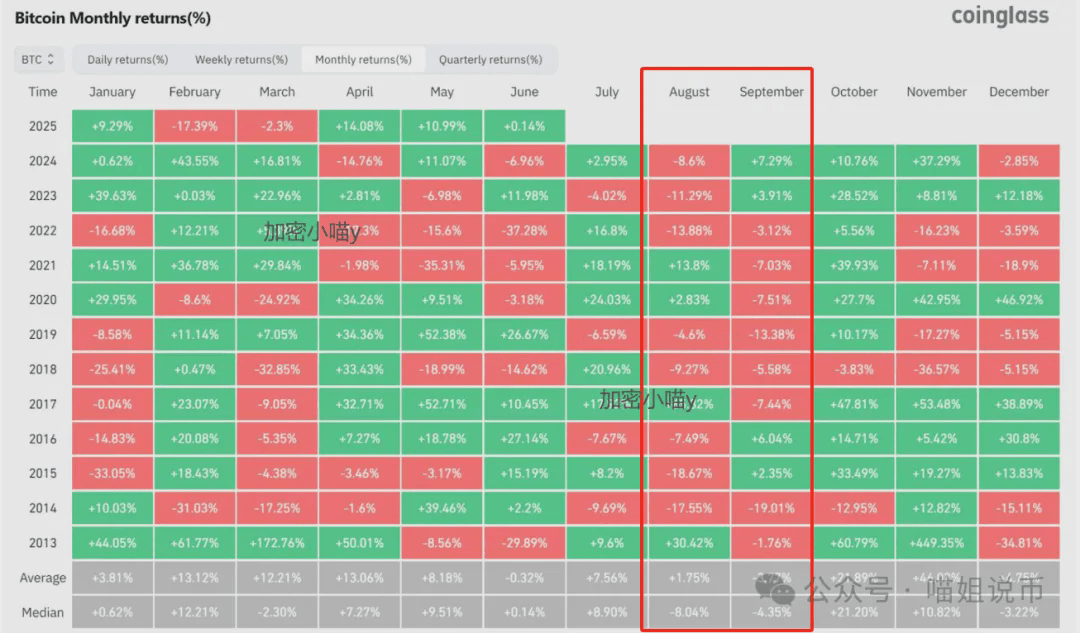
In the past two days, Bitcoin has consecutively fallen below the 20-day moving average, and today even briefly broke below 114,300, testing the 4-hour MA200 (around 114,660). RSI is already oversold, with short-term support expected. However, if the MA200 cannot hold, it may trigger deeper corrective actions, potentially filling the CME gap, or even retesting lower areas.
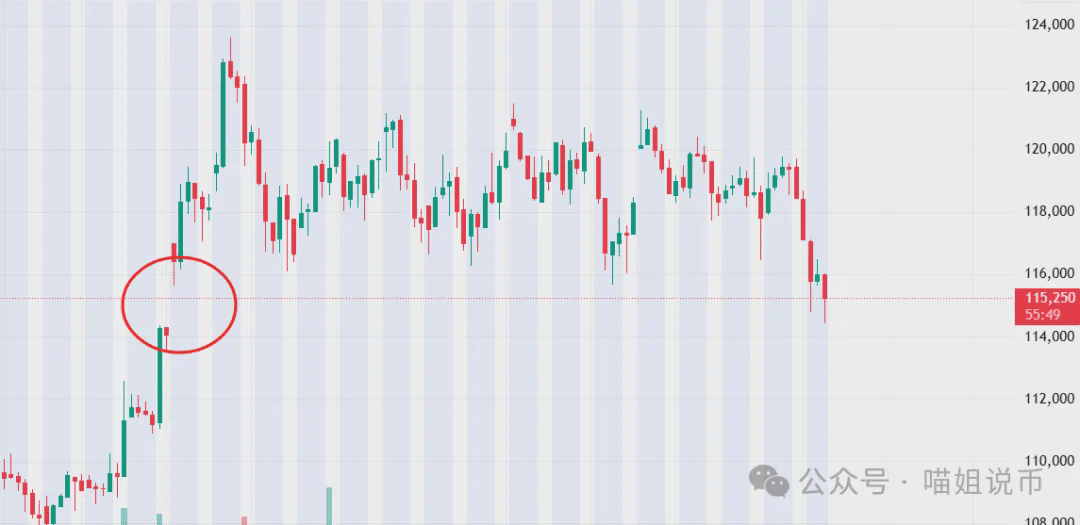
This wave of decline is actually not surprising. The Federal Reserve's hawkish statement yesterday suppressed expectations for a rate cut in September, impacting market confidence in the short term. Additionally, tonight there is the July #非农就业数据 (expected only 100,000 jobs, with the unemployment rate expected to rise to 4.2%), leading to an even stronger wait-and-see atmosphere in the market.
Bitcoin's recent stability is actually somewhat beyond expectations.
Galaxy Digital dumped 80,000 BTC, with long-term holders realizing profits of up to $2.5 billion, setting a new record;
Yen arbitrage liquidation, the German government selling BTC, and Trump's tariff remarks have consecutively impacted the market;
Bitcoin has twice hit short-term pressure, refreshing a two-month high, but still remains above 110,000.
What does this indicate? In the face of huge selling pressure, there is still a large amount of buying quietly absorbing it. The chip zone represented by 117-118 has completed an effective turnover, with early profits being realized and new funds entering the market. This is not a top but a healthy adjustment.
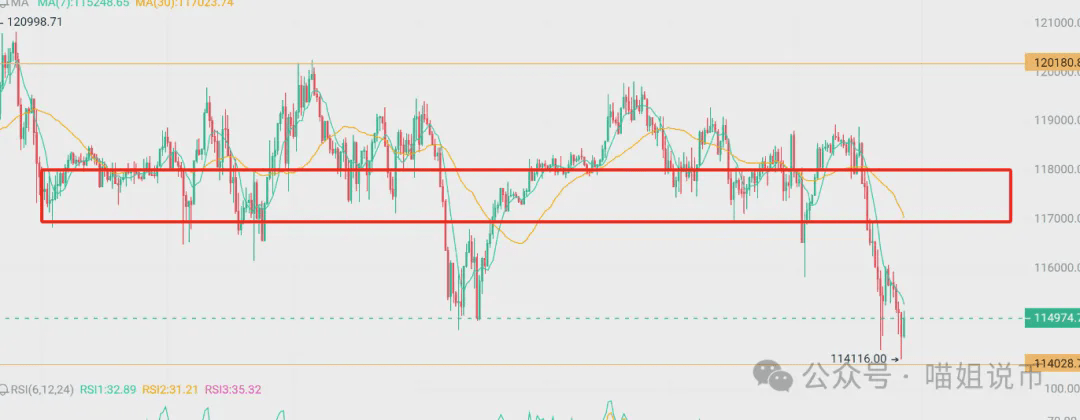
MicroStrategy is still buying, and whales are still bottom-fishing.
In this round, MicroStrategy has again taken action, buying 21,021 BTC with the $2.5 billion previously raised, and they are also preparing to finance an additional $4.2 billion to increase their positions. Coupled with the company's impressive Q2 financial report and Saylor's continued bullish outlook, this round of accumulation indeed sends a strong signal: they are betting on a distant future, not caring about short-term fluctuations.
From an on-chain perspective, the proportion of short-term speculation has recently decreased, but it hasn't reached an "overheated limit" state. Historically, every time this ratio hits extreme values, it leads to a round of adjustments, with the chip structure turnover, and a bull market breathes.
Therefore, we can also see that even though Bitcoin is currently weak in consolidation, the medium and long-term structure remains healthy; it just needs a little "catalyst"—for example, when the Federal Reserve will ease or when the macro environment will warm up.
ETH: Whales are quietly increasing their holdings; is $4,000 not a dream?
Finally, let's talk about #ETH . In the first half of the year, Ethereum experienced a deep washout, with spot prices once falling below realized prices, even whales were trapped.
However, in the last two months, the number of whale wallets has significantly increased, especially among large holders with over 100,000 coins. Their average cost line is around 1,720, which provides a strong advantage for profit-taking.
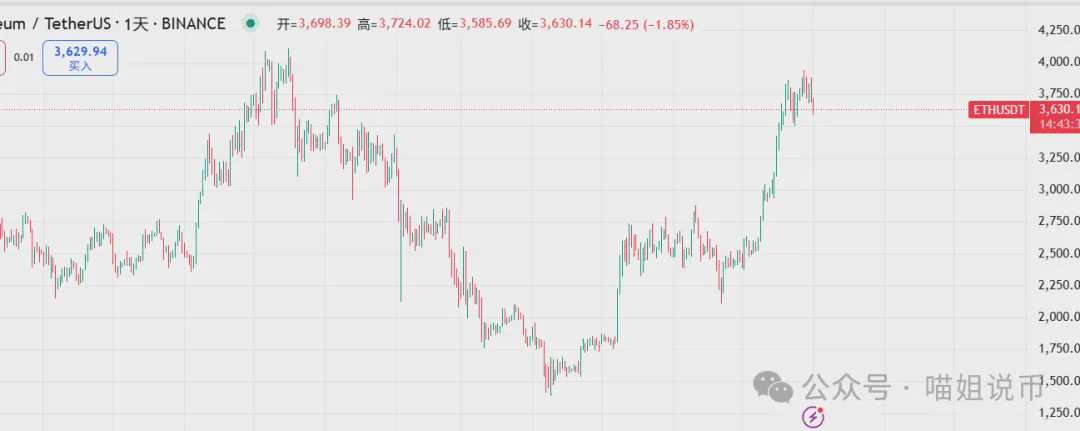
In contrast, the average cost for BTC large holders is between 45,000 and 59,000, which doesn’t show significant unrealized profits yet. This also means that once ETH breaks upward, there is room for it to outperform BTC.
Moreover, even traditional "BTC bull" companies like MicroStrategy have started to allocate Ethereum. The next $4,000 may not be as far away as you think.
Summary:
This round of adjustment does not mean an end; it is more of a buildup.
Bitcoin is still operating within a volatile range, while Ethereum is expected to accelerate its recovery.
Next, focus on two key variables:
The Federal Reserve's interest rate stance has shifted;
Whether the DXY trend stops rising and falls back.
Opportunities still exist, but the rhythm needs to be more flexible; stay focused on the main line and don't drift.
That's all for this article! If you feel lost in the crypto space, consider collaborating with me to strategize and harvest from the market makers!


